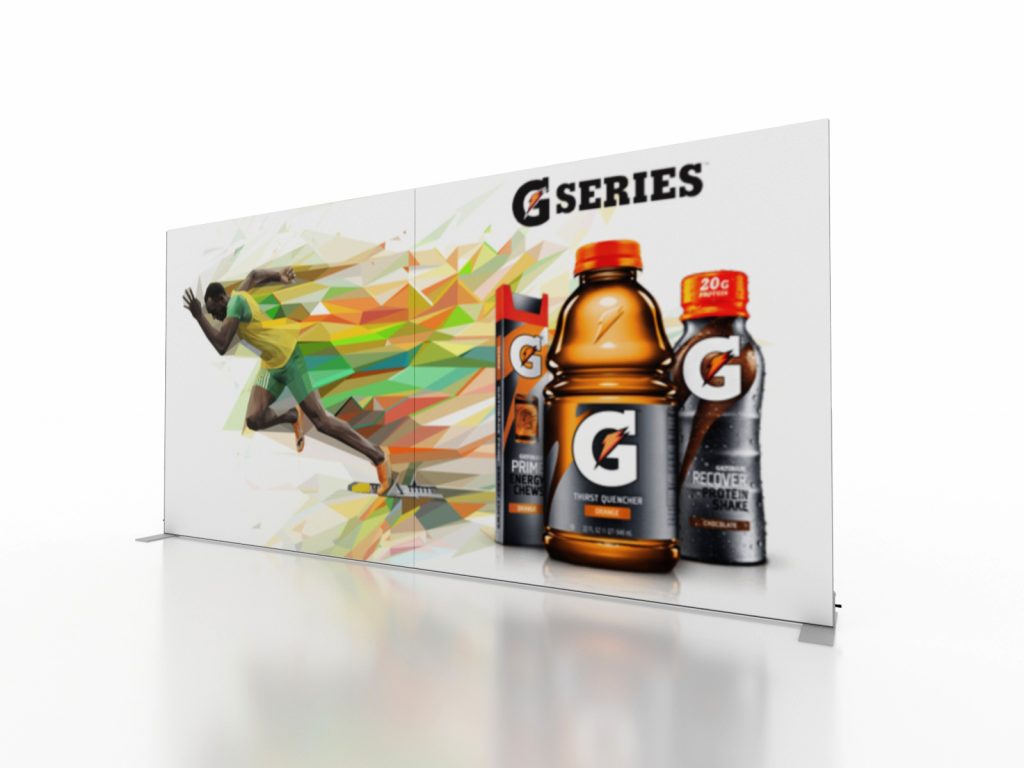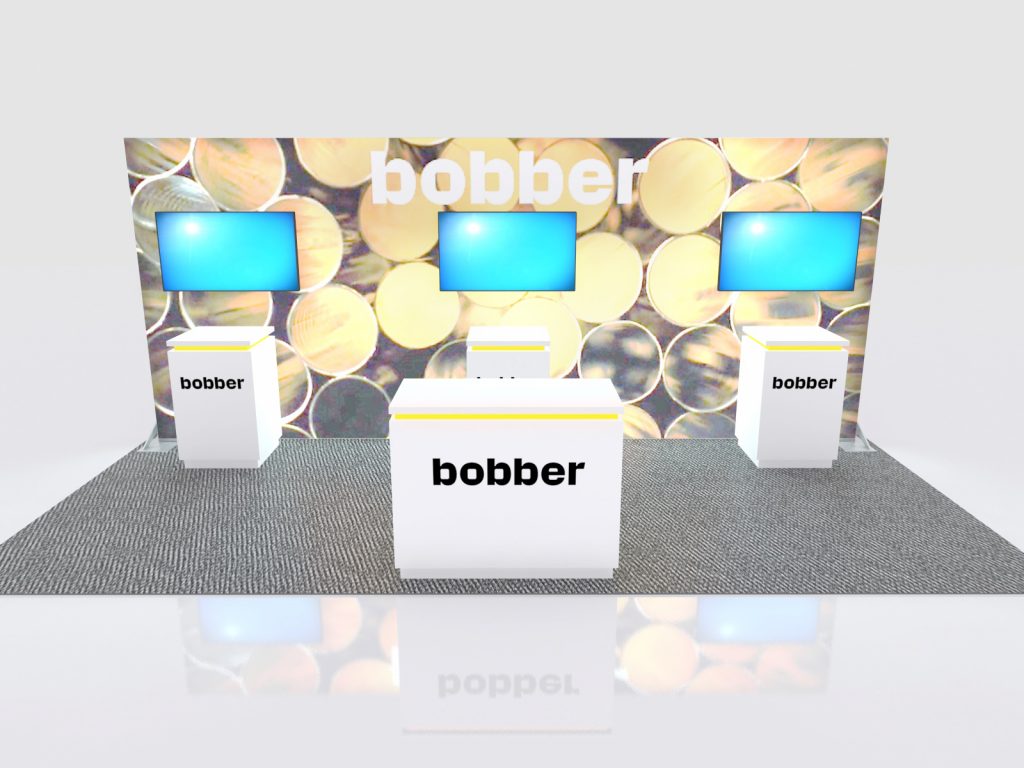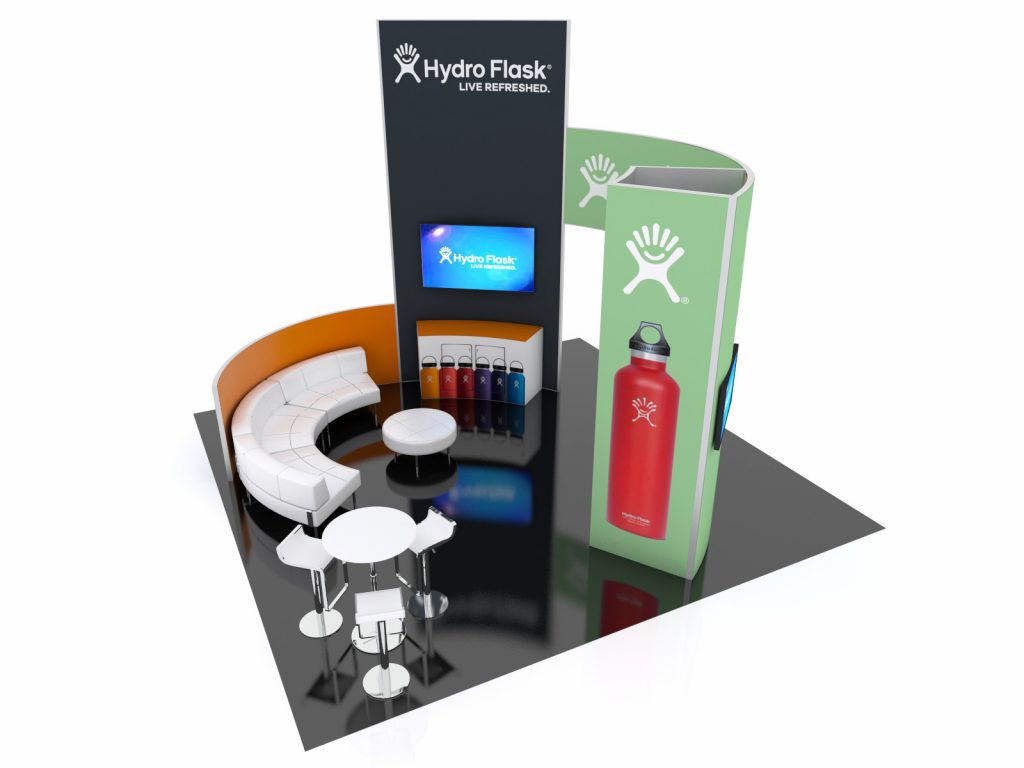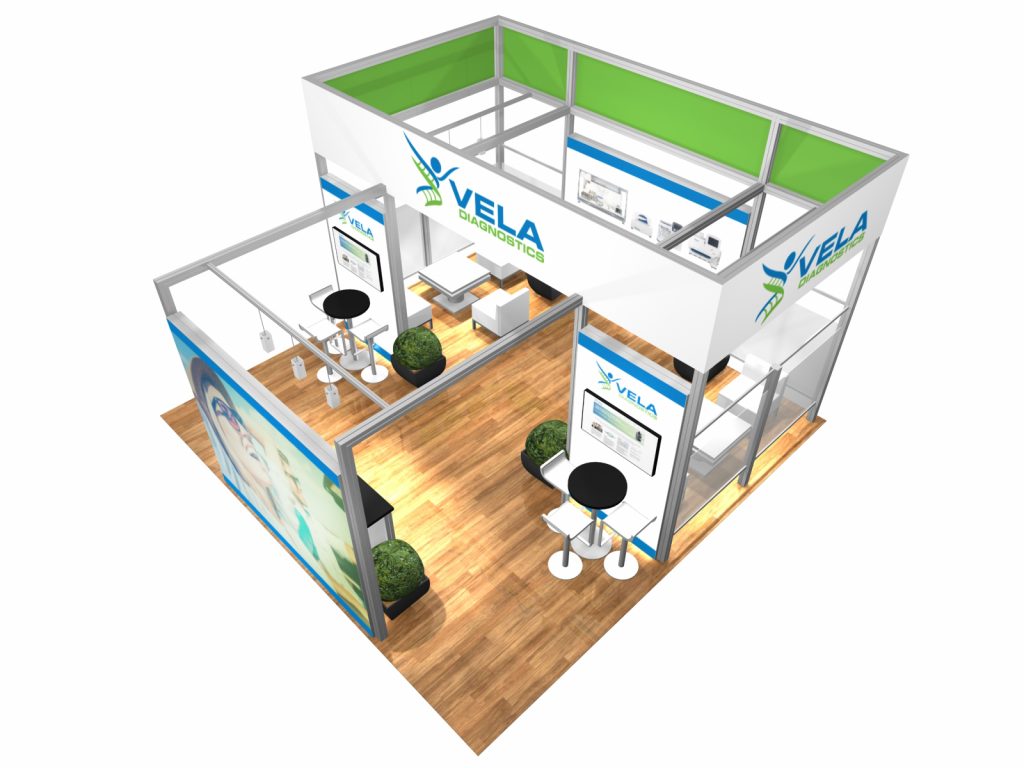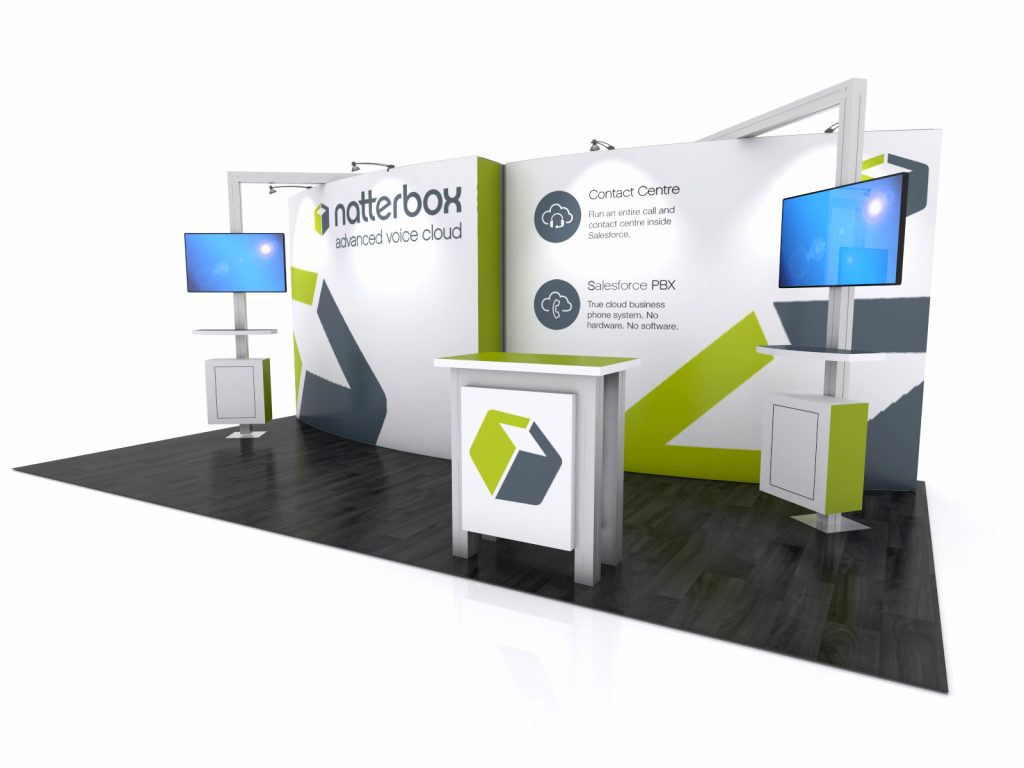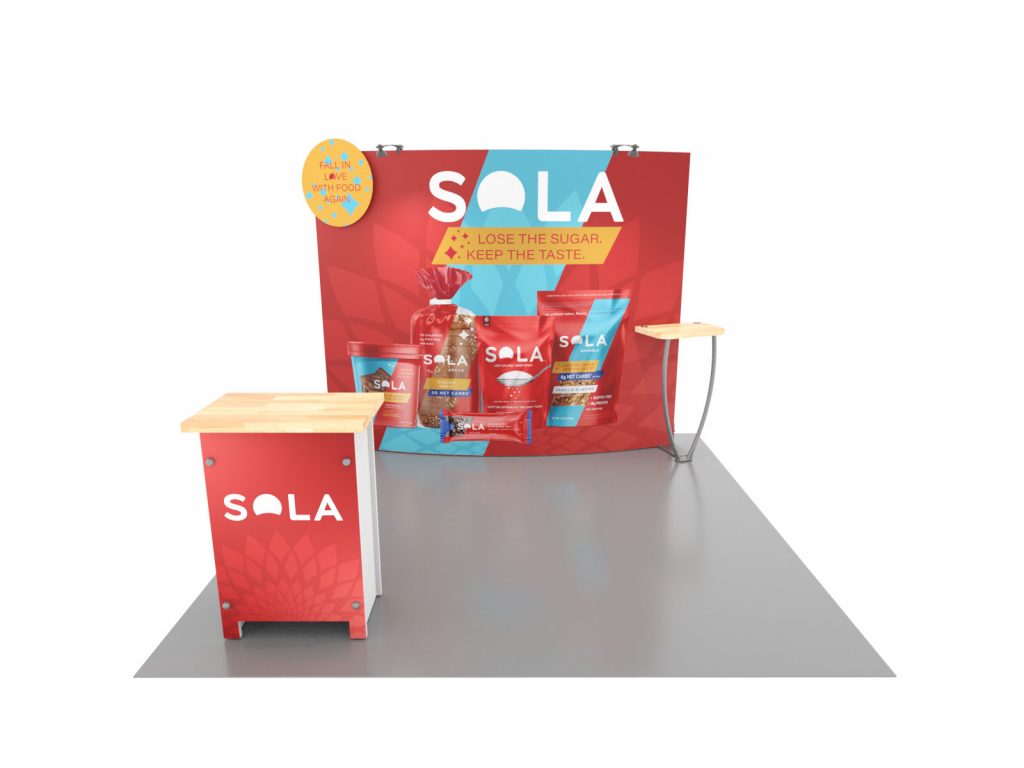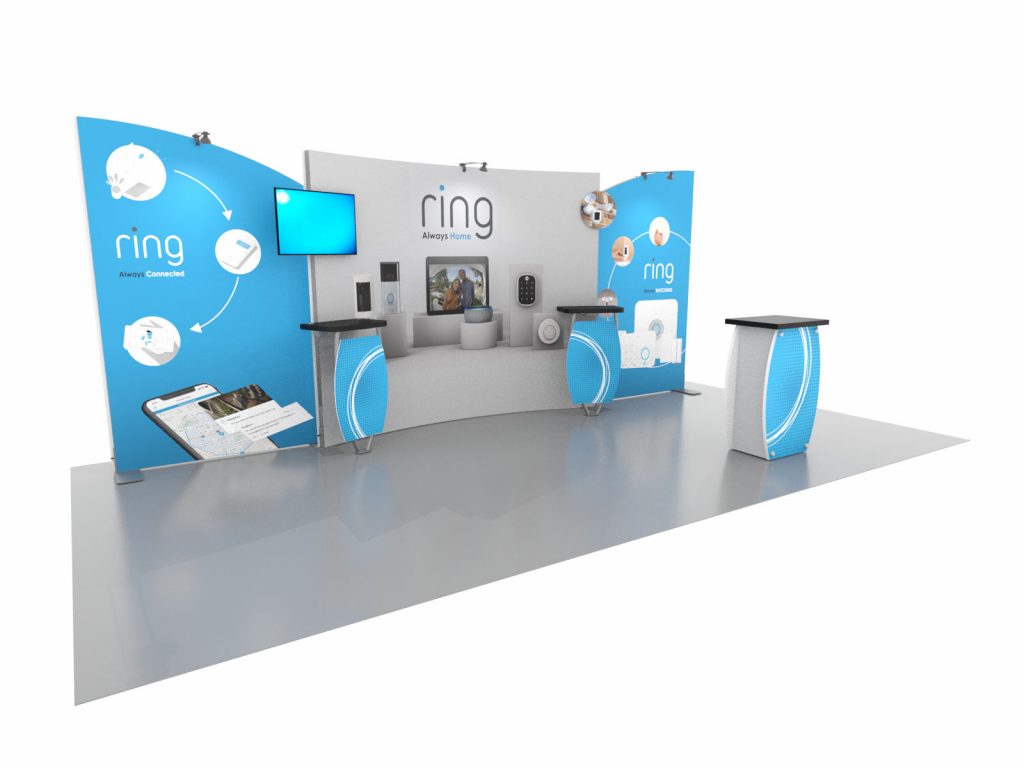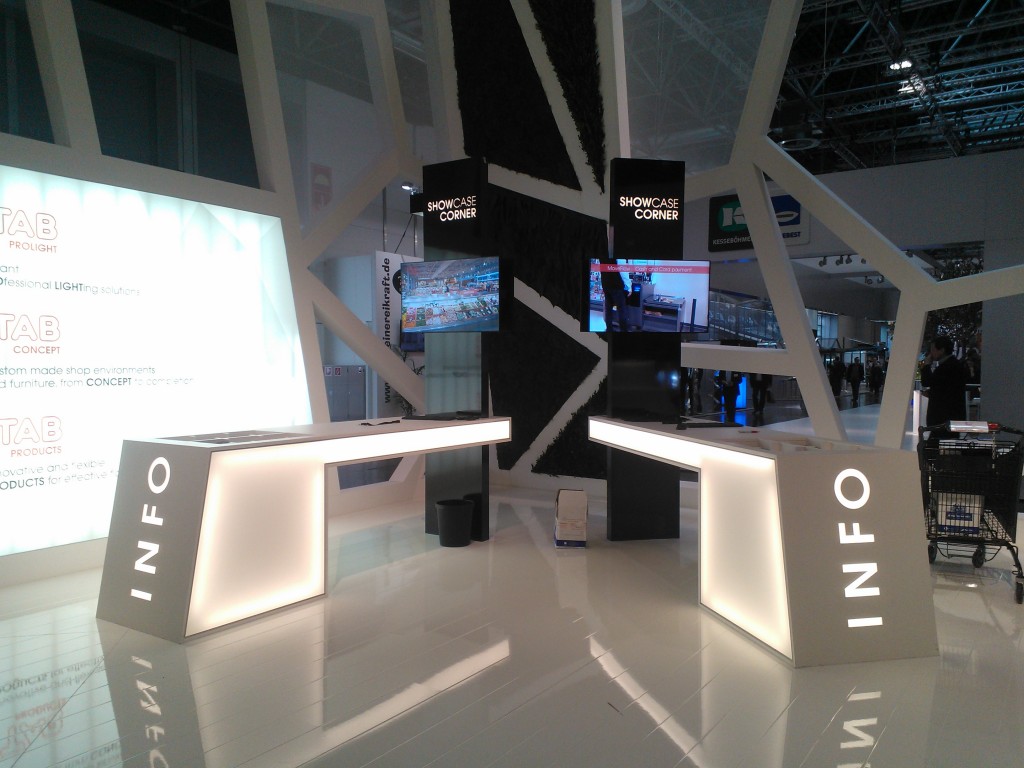
EuroShop 2014
As I write this, I’m 3 hours into a 10 hour flight back to Portland after an 8 day trip to Dusseldorf for EuroShop and meetings with MODUL International. Yes, I’m tired (and sick with a head cold), but that’s a fair trade for the wonderful, educational experience of the past week.
Katina and I shared photos all last week. From those, you can distill many design and material trends. But, not all. And, before I share my thoughts and reactions, a reminder that European trade shows (and any trade show outside North America) have different show guidelines, such as cubic content, no drayage, and minimal labor restrictions.
Now, I don’t pretend to be an expert on European trade show regulations. Sometimes I feel I have a minimal knowledge of North American regulations, particularly when I encounter oddities in our home market (such as hanging signs in San Diego). And, yes, the concepts of drayage and show hall labor baffle our European counterparts, who are surprised at how such vibrant, competitive markets as the USA and Canada can operate under restrictive, draconian, anti-competitive rules that inhibit free trade. When asked, I just shrug my shoulders. There’s no point explaining the irrational in rational terms.
Anyway, allow me to summarize some of the trends which may be relevant to North America. Blog length, not white paper length. Katina will share her perspectives in the next week or two. She’s still recovering from the visual overload that is EuroShop.
- Concrete. Yes, concrete. Not real concrete but the texture was everywhere. Faux finishes on wood, tension fabric, wall paper, and even flooring. I didn’t notice it at first, but once someone pointed it out I couldn’t not see it.
- Natural Wood. Again, everywhere, mostly as accent or design elements. Even raw logs as table legs and chairs. You’ll see it repeatedly as you scroll through the four days of photos we posted from Euroshop.
- Facets. No matter where you turned, odd, non-90 degree angles dominated. Again, some of it was clever design elements, but other times the angles were a distinctive window into the exhibit, either from the aisle or from within the display. Again, the photos illustrate this trend again and again and again.
- LED. Nearly 100 percent of the lighting solutions were LED. You’d have to be wearing a blindfold not to get the message. Plus, the fixture designs are finally beginning to align with the lights so they don’t look as industrial.
- iPads and Tablets. Europeans have not embraced tablets and iPads in the booths as readily as we have. They were there but often counter-mounted at the back of the booth. There were some stands (nearly all white). All basic. Our iPad stands (Classic Exhibits) were better designed, both aesthetically and functionally.
- Raised Floors. This isn’t a new trend. It’s distinctive to European trade shows. Nearly every booth has a raised floor, and there are no carpeted aisles (thank goodness). But, from talking to the flooring vendors and to some of my North American colleagues, raised flooring is on the upswing. It’s gotten much easier to assemble and the finish options are expansive. It still won’t be for everyone, but don’t be surprised if you see more islands with raised floors over the next 2-4 years. Oh yes, padding is unheard of . . . but you get used to that.
- SEG and Lightboxes. Everywhere. Effective. And commonplace. To some degree, they’ve become essential in the same way that portable literature stands are essential for most exhibitors.
 There’s more, but I’m going to leave that for you to discover in the photos. Plus, there were some intriguing ideas which I’ll allow our design and engineering teams to review. No reason to share too much with Classic’s competitors.
There’s more, but I’m going to leave that for you to discover in the photos. Plus, there were some intriguing ideas which I’ll allow our design and engineering teams to review. No reason to share too much with Classic’s competitors.
I’d like to thank everyone at MODUL International for being gracious hosts, and especially James and Bernd. They took us to dinner at a 13th century castle, went to an Oktoberfest party with us, and gave us a tour of their facility. Whenever we needed a break, we camped out on their double-deck. Also, our thanks to EDPA. Their booth was home base for us to visit with friends and industry colleagues. We would all compare notes, and then Katina and I would head back into the halls to see what others had seen but we had missed.
Katina . . . what can I say. You survived EuroShop and eight days with me. Good luck erasing that memory any time soon. Thanks for guiding me through the designs and for being a terrific sounding board and a dedicated photographer.
Finally, to all the employees at Classic Exhibits Inc., thank you for allowing Katina and me to attend EuroShop. Get ready for the four-hour PowerPoint. Session 1, Day 1, The Beginning. Session 2, 3, and 5 to follow.
Feel free to give me a call if you would like to talk about EuroShop. Or, we can review over a drink at EXHIBITOR in about three weeks.
For the number geeks (from a post-EuroShop press release): More that 109,000 visitors attended representing 110 countries. 73 percent were executives. There were 2,226 exhibitors from 57 countries. The next EuroShop is March 5-9, 2017.
–Mel White
http://www.linkedin.com/in/melmwhite
mel@classicexhibits.com
**********************************************
Based in Portland, Oregon, Classic Exhibits Inc. designs and manufacturers portable, modular, and custom-hybrid exhibit solutions. Classic Exhibits products are represented by an extensive distributor network in North America and in select International markets. For more information, contact us at 866-652-2100 or www.classicexhibits.com.
[subscribe2]




